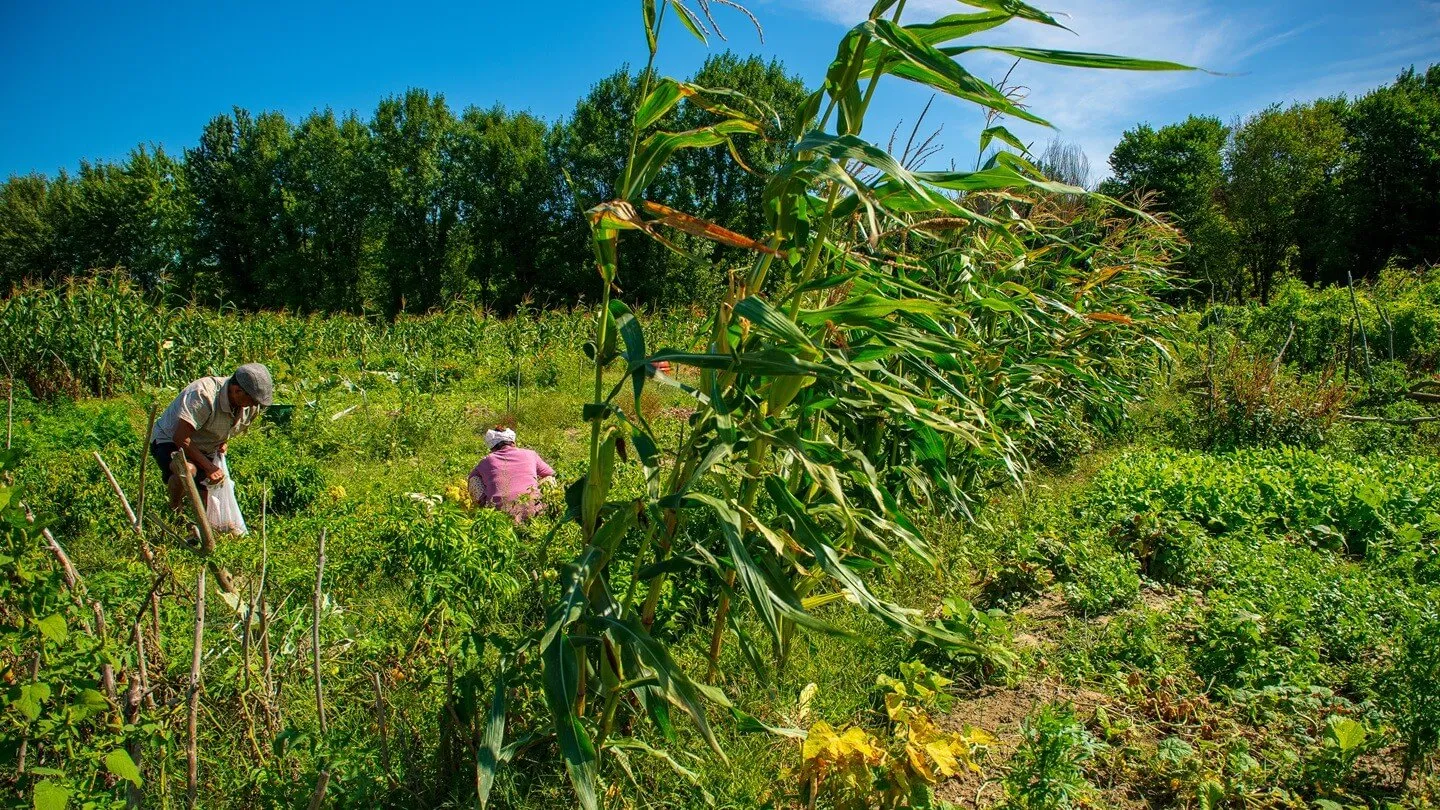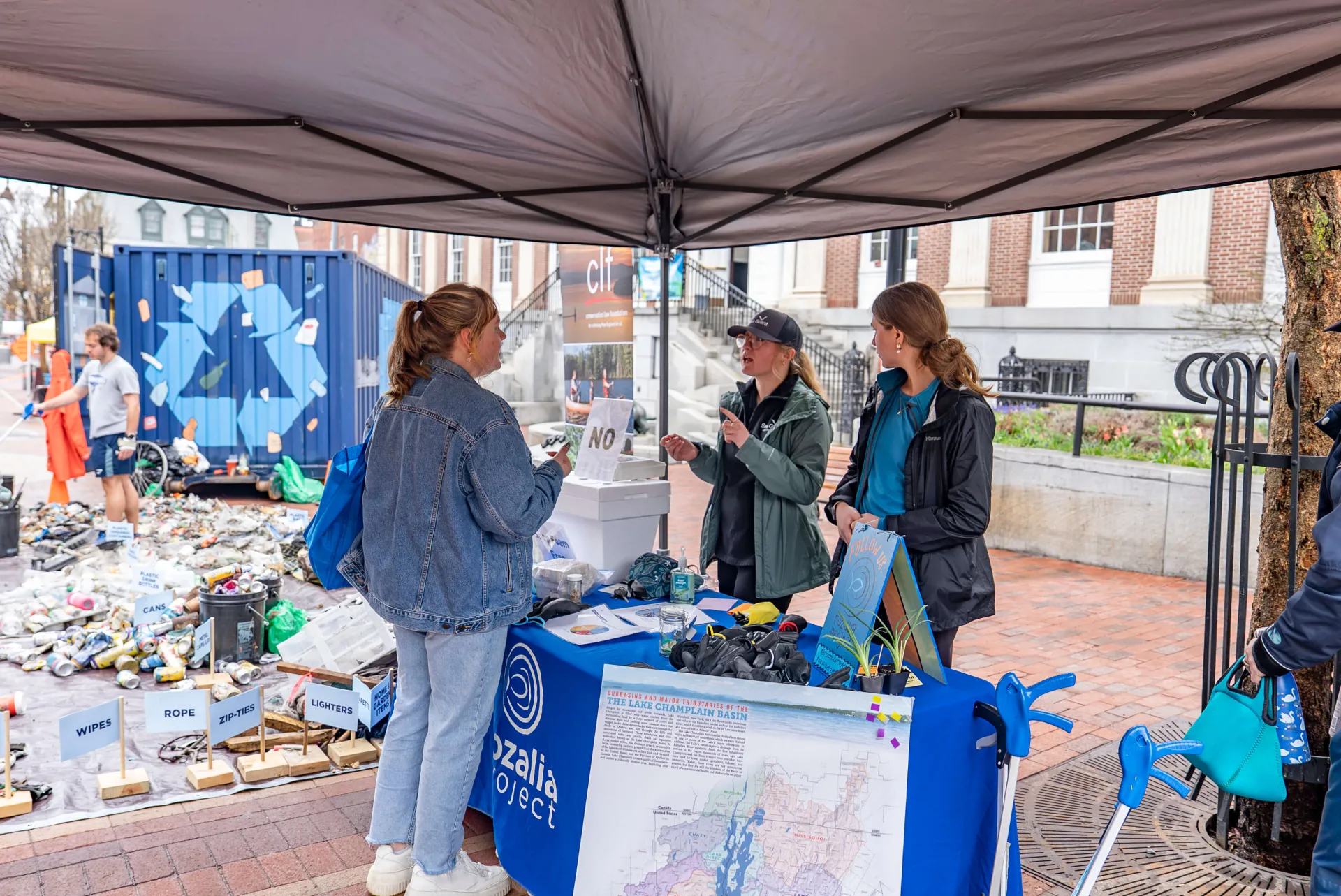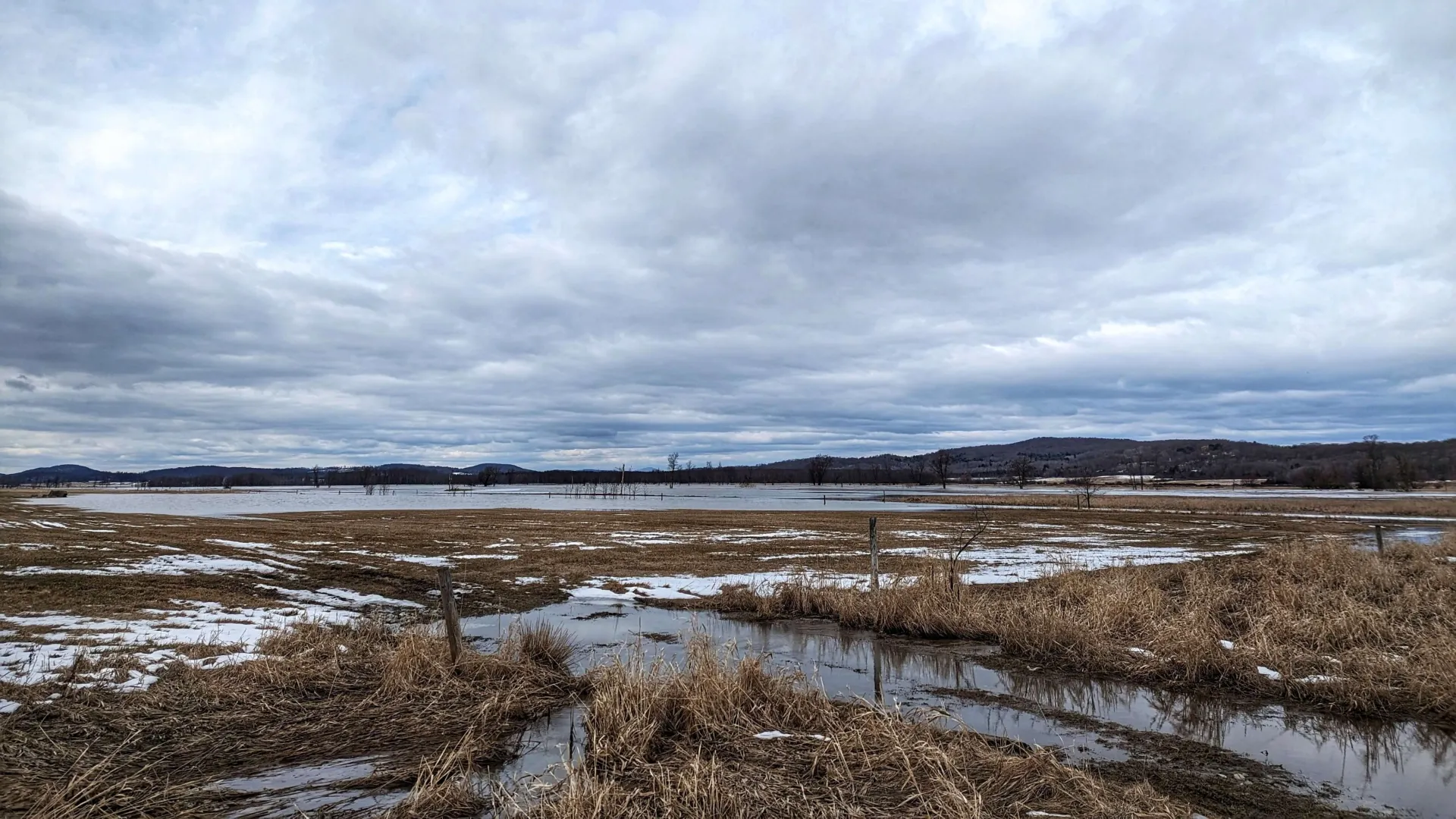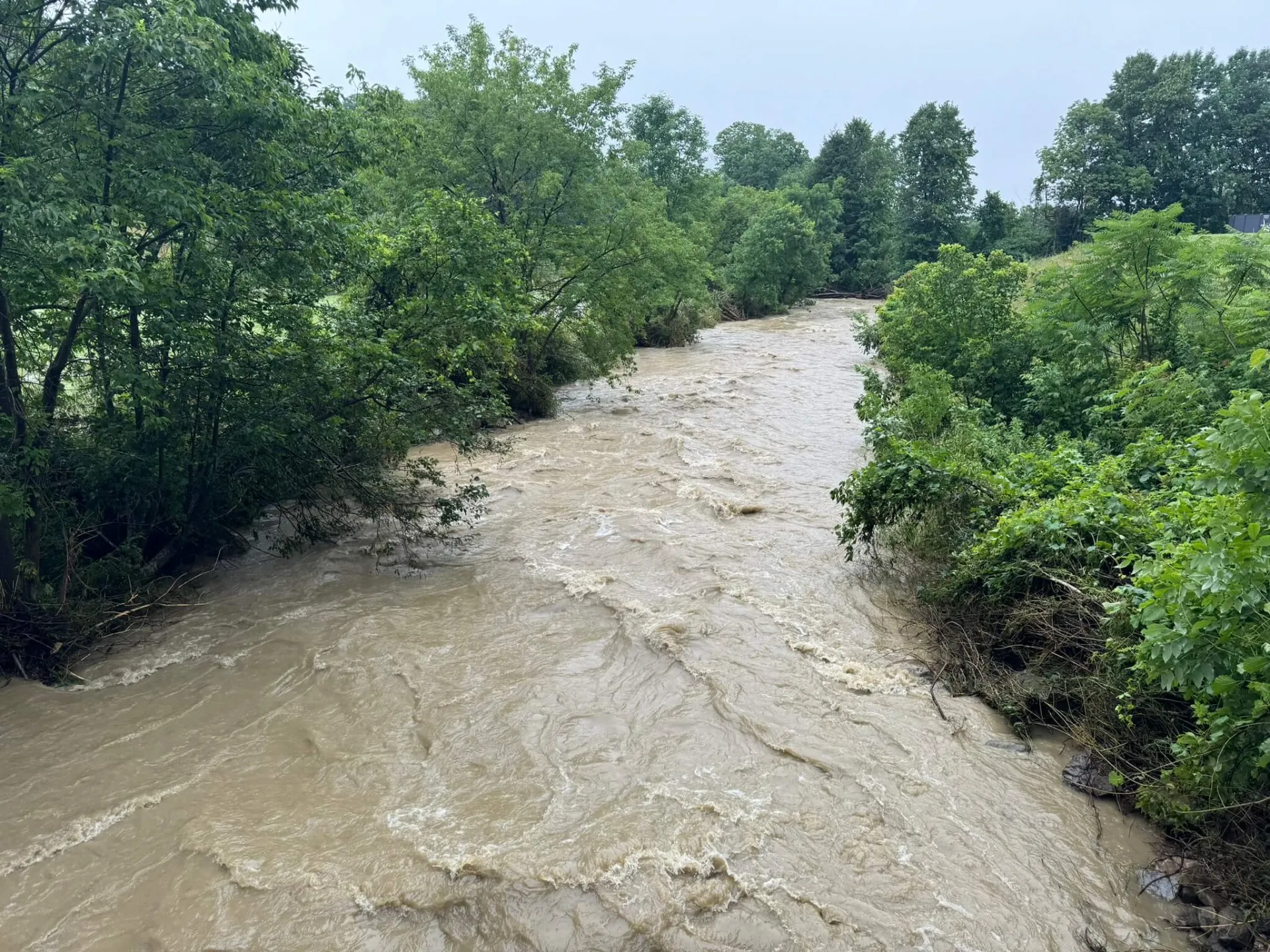The flood of 1927. Tropical Storm Irene in 2011. Historic flooding in 2023 and 2024. Vermonters are no strangers to extreme weather and the ways climate change exacerbates the impacts of natural disasters. But when the worst happens, Vermonters don’t see strangers—only neighbors who need help.
As Vermont’s land-grant university, the University of Vermont, too, aims to serve the people of the Green Mountain State. From agriculture to zoology, the research that happens here helps keep Vermont’s woods and waters clean, Vermont farms productive, and communities safer and healthier.
This summer, we’re sharing environmental research that improves lives and livelihoods in Vermont every day. Today, we’re highlighting projects on Vermont farms to help farmers diversify their income streams while keeping the environment healthy.
From loam to lake, keeping phosphorus in place
Tumbling creeks and winding rivers flow between Vermont’s pastures and Lake Champlain connecting farm to shore. Phosphorus spread to fertilize crops can end up in the lake, contributing to toxic algae blooms and other environmental damage. Farmers across Vermont know this well, and use a variety of methods to keep phosphorus from flowing off their fields and downstream. Various Vermont Agency of Agriculture, Food and Markets programs and state laws provide incentives for farmers to adopt specific phosphorus mitigation methods, legislate what they can do, and fine them for violations. But one program takes a different approach: paying farmers for keeping phosphorus on their farms using methods the farmers choose themselves.
The Vermont Pay-For-Performance program is one that “a lot of farmers appreciate because they can decide how to meet these goals,” says Gund Institute Director Taylor Ricketts, who as been involved with the program since it started four years ago. “They can be the businesspeople and innovators that they are.”
The U.S. Department of Agriculture-funded program is administered by Vermont’s Agency of Agriculture, Food and Markets. Farmers receive payments based not on adopting any one practice, but on the results of their efforts instead: the amount of phosphorus they manage to keep out of waterways. How the farmers go about that is up to them, says Ricketts, who is also professor in the Rubenstein School of Environment and Natural Resources. Some might plant cover crops or stop tilling to reduce soil erosion, while others might adopt rotational grazing systems. A computer model calculates the amounts of phosphorus retained in place due to each change, and farmers are paid accordingly.
Now, a Gund Institute research team is assisting the Agency of Agriculture in evaluating how well the program has worked over the past four years. Data indicate that most participants in the program have reduced phosphorous flows from their farms, although how much is due specifically to these payments is hard to know. What is clear is that farmers appreciate the incentives and support in doing the right thing.
“The farmers, by and large, really appreciate those payments. We know because we’ve asked them,” Ricketts says. “These payments aren’t related to the prices of the products they sell, so they bring diversity and stability to farmers’ income; if the price of milk goes down, farmers will still get this phosphorus payment and it won’t decrease.”
The program aids Vermonters in three key ways, Ricketts says. In addition to helping to keep Lake Champlain clean, it’s helped farmers to diversify their incomes at a time when margins are razor thin. And because participating farms must keep detailed records of their activities, farmers emerge with new information about their operations, which can help maximize productivity and benefits in other aspects of their farming as well.
“What’s cool about the program is that it’s addressing two of Vermont’s biggest land use problems: dairy farmers are struggling economically, and the lake is struggling with phosphorus,” Ricketts says. “Recognizing that these two problems are linked, and trying to address them together, is efficient and clever.”
Cash from cowpies
Another type of on-farm effort, meanwhile, is finding ways to create worth from waste. UVM College of Engineering and Mathematical Sciences professor and Gund Fellow Matthew Scarborough and his students are working to turn food waste and cow manure into something useful, from propane, heat, and electricity to ingredients for personal care products.
Over a dozen Vermont farms host anaerobic digesters, which are facilities that use microbes to break down organic waste, typically cow manure. When the waste breaks down, it produces biogas (a mix of methane and carbon dioxide) that can be used to heat or power the farm, Scarborough says. Farmers can also sell any excess electricity produced back to the grid. To increase biogas production, farmers can add food waste to their digesters, in addition to manure. Scarborough and collaborator Dr. Eric Roy recently completed a project funded by the EPA to assess farmer willingness and potential benefits and drawbacks of digesting food waste along with manure.
“This project is helping us develop ways to take care of Vermont’s food waste and manage it appropriately, while generating renewable energy and providing farmers with additional revenue and income streams,” Scarborough says. “From my perspective, it’s a way to win across multiple areas.”
As a shifting energy economy has made it less profitable to sell excess electricity, Scarborough and his research team are testing different combinations of microbes to produce new products. Two ongoing projects involve creating specific environments in which the microbes digest waste, in order to encourage various end products of digestion. In one project, funded by the National Science Foundation, Scarborough and his team are attempting to set up perfect conditions for the microbes to turn organic waste into compounds that become ingredients for agricultural, personal care, and pharmaceutical products, like facial creams.
“Right now, most of those are a product of palm refining, which mostly is not done sustainably—and you can’t really grow palm trees in Vermont, either,” Scarborough says, noting that such products are also derived from fossil fuels. He adds, “We’re hoping to contribute to a circular local bioeconomy, where we can produce a large range of products from local organic waste instead.”
A second, U.S. Department of Agriculture-funded project involves exploring the possibility of producing propane rather than methane from manure. Scarborough and his team are working to create the ideal environment for the microbes to digest the manure in a way that yields propane. It’s a multifaceted process involving altering chemical, physical and biological conditions to see which ones guide the microbes toward the desired digestion product.
Scarborough points out that propane is widely used in rural areas like Vermont, where natural gas infrastructure isn’t available. Propane also has a lower, and shorter-lived, greenhouse effect than methane does.
“What I like to do is think about the future—200 years from now, it's not out of the question that we could be using microbial, chemical, and physical processes to convert food waste into all of the chemicals society needs,” Scarborough says. “But connecting the dots from present to then is a lot of hard work, and there are fundamentals we still need to figure out.”



